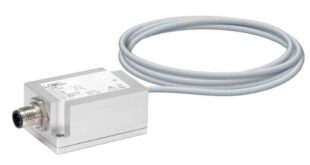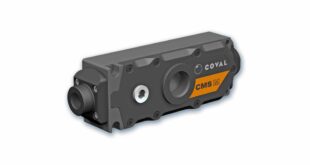IMI Critical Engineering has launched a steam trap monitoring solution to reduce losses and excess downtime in industrial applications resulting from blocked or leaking steam traps.
Steam use in industrial applications is practically endless, but unmonitored steam lines often end up costing operators a significant amount of money in maintenance and unplanned downtime.
The STM-10 steam trap monitoring solution comprises wireless compact sensors monitoring critical process conditions and software, which uses data from the sensors and smart algorithms to instantly confirm whether a steam trap is blocked or leaking.
The smart algorithms used within the STM-10 have been developed with IMI Critical Engineering’s extensive experience in steam process and control. These insights will help operators make changes for the better.
Combined with proactive maintenance schedules, the STM-10 cuts energy costs and CO2 emissions while reducing the risk of wet steam erosion damage.
The STM-10 was developed within Growth Hub, IMI’s innovation engine, driven by deep customer engagement, which has shown that it has often been difficult for maintenance teams to identify faults on valve traps due to a typical lack of sensors installed. As a result, control rooms will rarely identify the leaks and plant managers can be oblivious to problems that can lead to long periods of downtime and significant losses.
The solution’s compact design is easily installed to exposed pipes either side of the steam trap. The associated asset monitoring cloud-based dashboard gives operators and maintenance staff the ability to instantly diagnose steam trap failures, allowing corrective actions to be initiated before problems begin to harm production yields.
It uses wireless long-range communications and thermal energy harvesting, making it a self-contained solution that can be installed by any member of the plant maintenance team.
IMI estimates that digital technologies such as STM-10 can help cut capital expenditure by 20% and improve global cash flow by as much as $300 billion. Additionally, 8% of annual turnover is lost due to unplanned shutdowns. Predictive maintenance has reduced downtime by up to 25% in the oil and gas industry alone.
The Internet of Things (IoT) is set to play an increasing role in both the power and oil and gas industries in the coming decades. According to McKinsey, digital methods such as the IoT can play a substantial role in optimising yield, energy and throughput to ensure maximum output for the energy consumed and, therefore, profitability. It estimates that these methods can cut scope one and two carbon emissions by approximately 20%[1].
Jackie Hu, CEO of Automation at IMI, said: “Blocked and leaking steam traps can have a significant impact on plant performance, but can be difficult to identify using the standard data fed through to control rooms.
“STM-10 is a solution to this challenge that has the potential to improve plant performance, delivering hundreds of thousands of dollars of savings and cutting CO2 emissions significantly.
“This is an example of the difference the Growth Hub can make in delivering innovative solutions to what are very challenging problems for plant managers.”
 Engineer News Network The ultimate online news and information resource for today’s engineer
Engineer News Network The ultimate online news and information resource for today’s engineer





